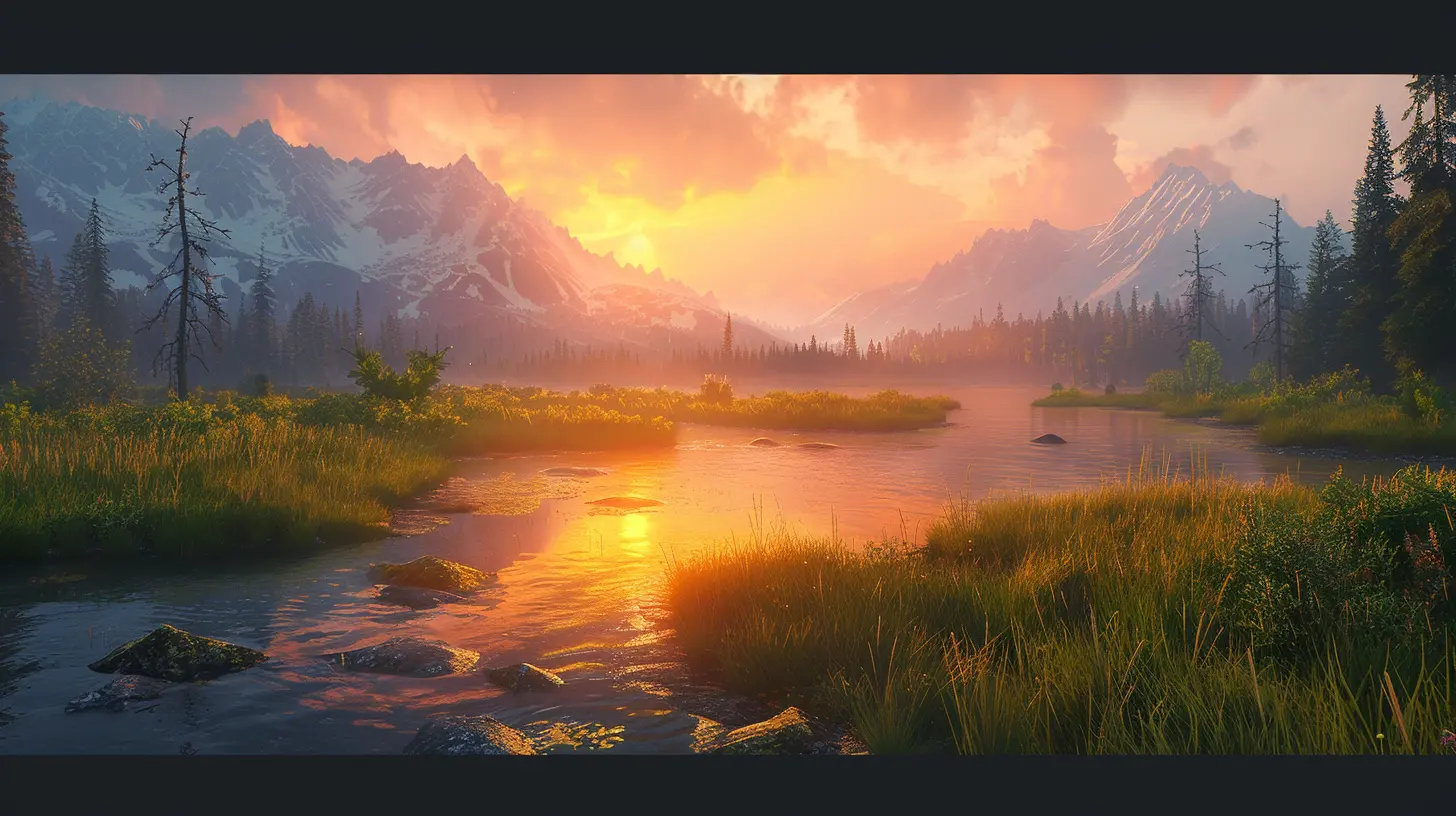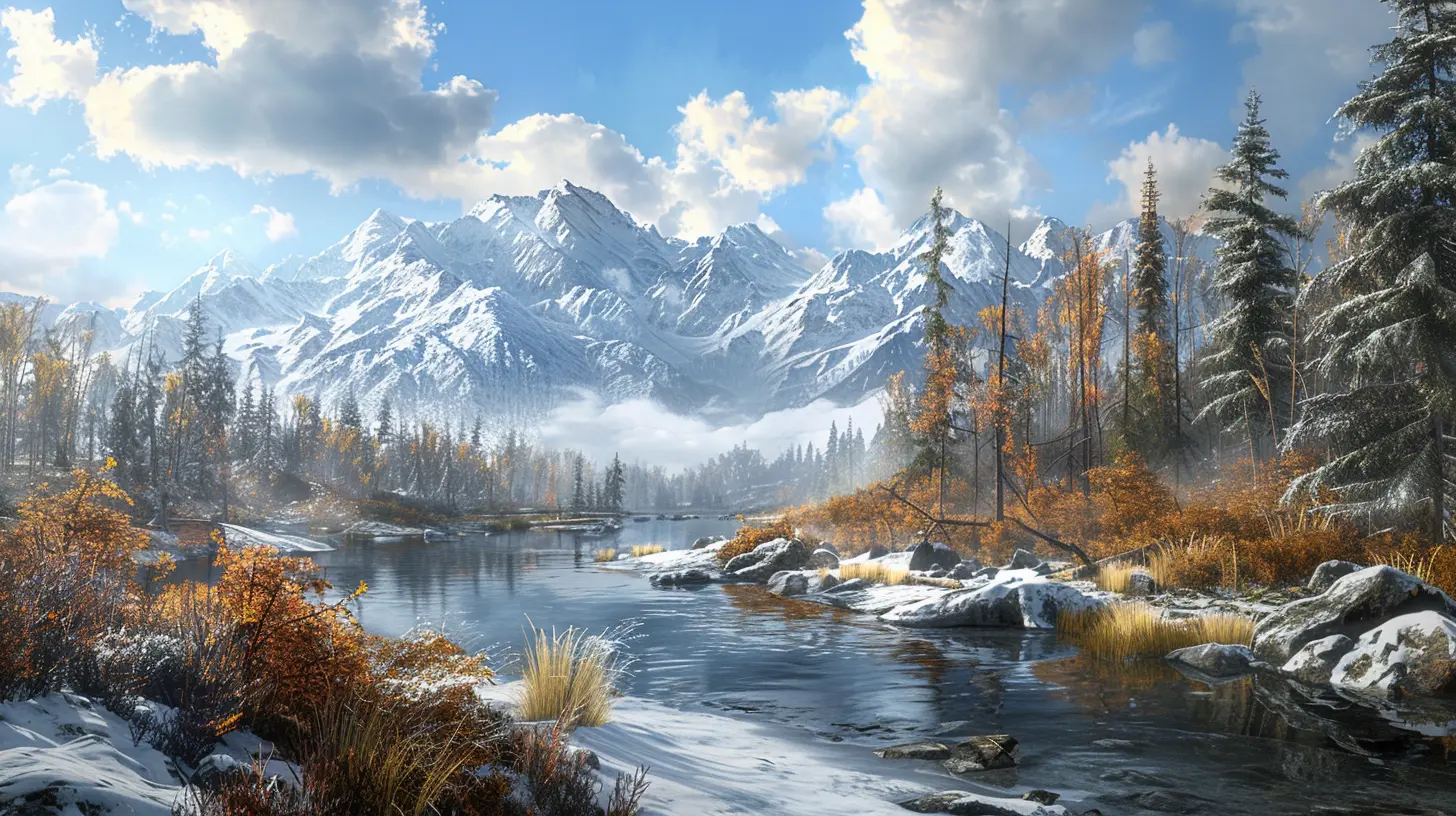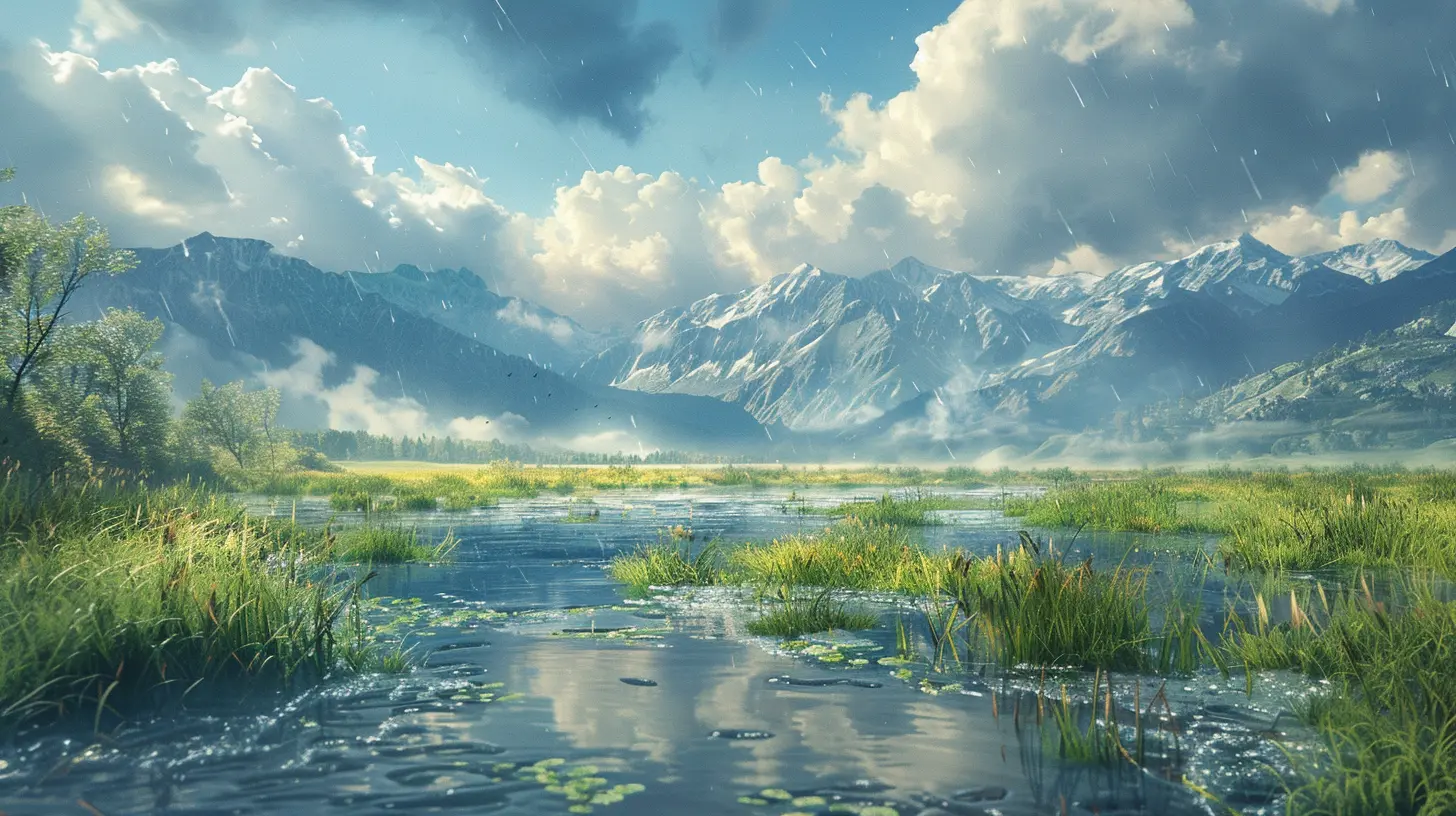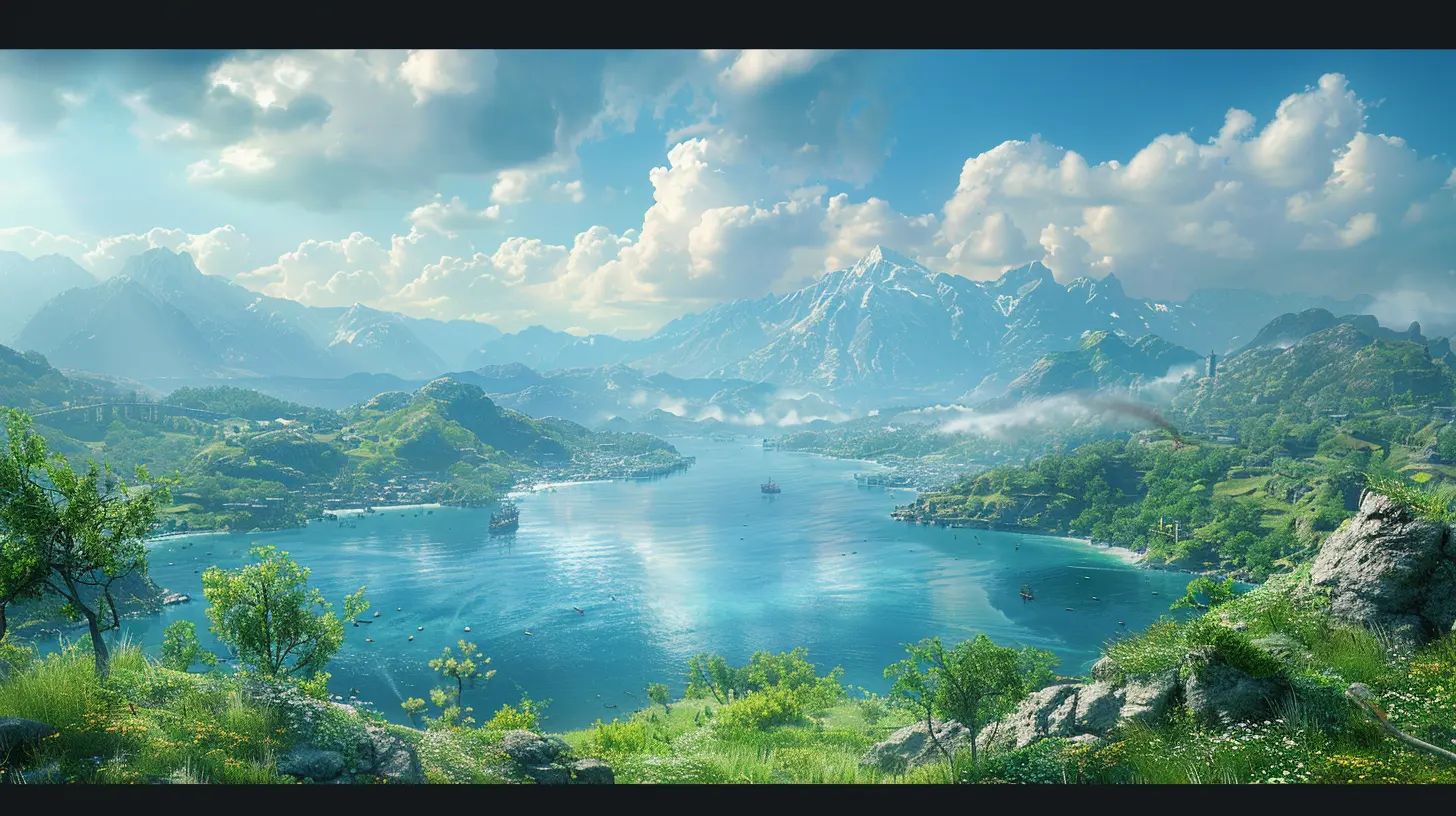16 February 2025
So, you've probably spent hours roaming around open-world games, right? (Don’t lie; we’ve all fallen for the “just one more quest” lie.) One minute you’re riding into the sunset on your trusty steed, and the next, BAM—instant downpour that makes you question why your character is allergic to umbrellas. Weather systems in open-world games are, hands down, one of the sneakiest ways developers manipulate the game’s vibe. But hey, it’s all part of the fun, isn’t it?
Let’s talk about why these unpredictable weather mechanics are more than just aesthetic fluff and how they can straight-up troll you—or make your gaming experience infinitely cooler. 
The Art of Digital Weather: More Than Just Eye Candy
You know what’s the most annoying thing about weather in games? It’s not just there to "look pretty." Nah, it’s got a way of weaseling itself into the gameplay, changing the rules on the fly. Sure, that thunderstorm off in the distance might look Instagram-worthy, but then it gets closer, and suddenly, your character’s cape is plastered to their back, your visibility is garbage, and your enemies are probably sneaking up on you because apparently they don’t care about wet socks.Weather in open-world games isn’t just visual dressing—it’s a bona fide mechanic. If you’re not paying attention, you’ll find yourself cursing a virtual rainstorm as if it borrowed money and never paid you back.
Dynamic Weather = Chaotic Entertainment
Here’s the thing: anything labeled “dynamic” in gaming is basically code for “good luck planning.” Don’t believe me? Just play The Legend of Zelda: Breath of the Wild. That game made rain feel like Satan’s personal prank on your climbing adventures. Oh, you wanted to scale that cliff? Too bad—it’s raining! Guess you’ll just slide down like a clumsy toddler on a water slide.But dynamic weather isn’t all bad, I guess. It keeps open-world gameplay feeling fresh and unpredictable. Every rainstorm, snow flurry, or sandstorm comes with its own set of challenges and opportunities. It’s like gambling—but instead of losing your paycheck, you’re losing your patience. 
Types of Weather: The Usual Suspects
Let’s break this down: weather in open-world games usually falls into a few predictable categories. But don’t be fooled—they’re all out to get you in their own special way.1. Rain: Nature's Buzzkill
Rain in games is the ultimate troll. Remember when I mentioned Breath of the Wild? Yeah, that’s Exhibit A. But rain isn’t all about ruining your platforming dreams. It can also affect NPCs, enemy detection, and even combat.In Red Dead Redemption 2, rain isn’t just wet pixels—it dampens gunpowder, which can mess with your shooting accuracy. Oh, you thought you were a sharpshooter? Not when your bullets refuse to cooperate because of a drizzle. Thanks, Rockstar.
2. Snow: Pretty, But Deadly
Snow is the Instagram influencer of video game weather. Looks stunning, but it’s secretly here to ruin your life. Deep snow slows down movement, messes with visibility, and can even cause frostbite mechanics in survival games like The Long Dark.And don’t even get me started on snowstorms. You know that panicky feeling when you can’t see two feet in front of you, and you’re pretty sure something’s about to eat you? Yeah, blame the snow for that.
3. Fog: The Horror Movie Effect
Fog is the OG master of deception. It’s the weather equivalent of a jump scare—you’re wandering through the mist, thinking, “Oh, this is eerily peaceful,” and then, surprise! Enemy ambush.Games like Silent Hill mastered the use of fog to create tension and atmosphere. It hides danger, but it also hides... well, everything. Walk ten feet in the wrong direction, and oops, you’re lost now.
4. Sandstorms: Nature's Middle Finger
Ah, sandstorms. Because nothing says “immersive gameplay” like having your field of vision reduced to a grainy orange mess. They’re common in desert-based open-world games like Assassin’s Creed Origins, where a sandstorm can force you to find shelter and rethink your strategies.But hey, at least it’s a good excuse to take a virtual breather, right? (Spoiler: no one actually likes sandstorms.)
5. Lightning: Zeus’ Video Game Cameo
Lightning storms are practically a requirement in action-packed open-world games. But rather than being just flashy (pun intended), they usually come with a heaping side of danger.In Breath of the Wild (again, Nintendo really set the standard for weather shenanigans), wearing anything metal during a lightning storm turns you into a walking lightning rod. Because yeah, what’s better than running for your life while dodging electrified death? 
How Weather Shapes Gameplay
Okay, so weather makes the world feel alive, sure. But let’s talk about the real MVP move: how it actually changes gameplay. This isn’t just about getting wet or cold—the best open-world games make weather a factor.Combat: Mother Nature Wants to Watch You Struggle
Rain can make surfaces slippery, snow can slow your movement, and wind can mess with projectile accuracy. In some games, like Horizon Zero Dawn, weather can even dictate enemy behavior. Machines might be harder to detect in fog, or they’ll ignore you altogether in a heavy storm.Weather isn’t just your enemy; it’s also your frenemie. Sometimes, you can use it to your advantage. A sudden downpour might mask your footsteps, letting you sneak up on enemies more easily. Or a sandstorm could give you the cover you need to escape a dicey situation.
It’s like the developers are saying, “Here’s a little chaos. Do something cool with it—or, you know, fail miserably trying.”
Traversal: Who Needs Dry Feet Anyway?
If you think weather doesn’t matter for traversal, you’ve clearly never tried riding a horse in Red Dead Redemption 2 during a thunderstorm. Muddy trails slow you down, icy roads make vehicles skid, and high winds can knock you off course if you’re sailing in Assassin’s Creed IV: Black Flag.Honestly, weather makes traveling from Point A to Point B feel like a mini-adventure. Will you make it in one piece? Who knows? The weather’s in charge now. 
Weather as a Storytelling Tool
Here’s where things get kinda poetic (don’t roll your eyes—it’s true). Weather isn’t just a gameplay mechanic; it’s a mood setter. It can reflect the story’s tone or even the emotional state of your character.Think about how The Witcher 3 uses weather. A sunny day in Novigrad feels hopeful, like the world’s full of possibilities. But as soon as you’re trekking through Velen’s swamp under a gloomy sky, you swear the game is whispering, “There’s nothing but pain here, buddy.”
Weather bridges the gap between the player and the game world. It makes everything feel real, even when you’re battling dragons or chasing down cyberpunk bounties.
The Good, the Bad, and the “Why Is This Happening?”
Let’s be real: weather in games isn’t always a masterpiece of player immersion. Sometimes, it’s just plain annoying. Rain that lasts forever? Check. Fog that makes you walk in circles? Check. Physics-breaking wind that flips your car for no reason? Oh, absolutely.But for every “I hate this stupid weather system” moment, there’s a “Whoa, that was awesome” moment waiting around the corner. When done right, weather makes the world feel alive, unpredictable, and worth exploring.
Final Thoughts: Weather Is the Ultimate Game Master
So, next time you’re cursing the rain for turning your open-world adventure into a soggy mess, just remember: the weather is doing its job. It’s not just there to frustrate you—it’s there to keep things interesting.Weather is the silent puppet master of open-world games, pulling strings you didn’t even realize existed. Whether it’s raining, snowing, fogging (is that even a word?), or throwing lightning bolts at your head, it’s all part of the experience. Love it or hate it, weather makes the game world feel real in a way that static environments never could.
And if you still can’t appreciate it? Well, just be glad real life doesn’t have dynamic weather tied to RNG rolls.








Brandon Heath
Dynamic weather can transform gameplay, influencing strategy and immersion. Mastering these elements enriches player experience, making every exploration uniquely engaging and unpredictable.
April 5, 2025 at 3:44 PM